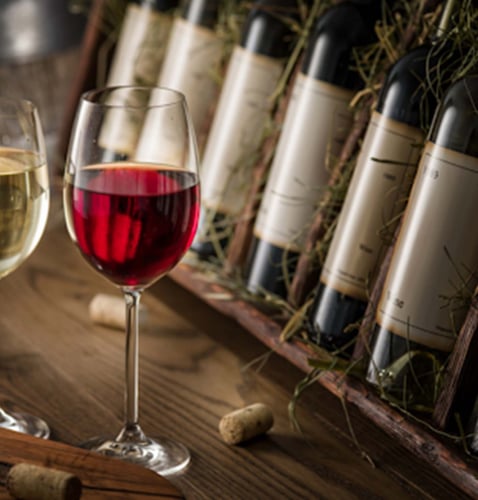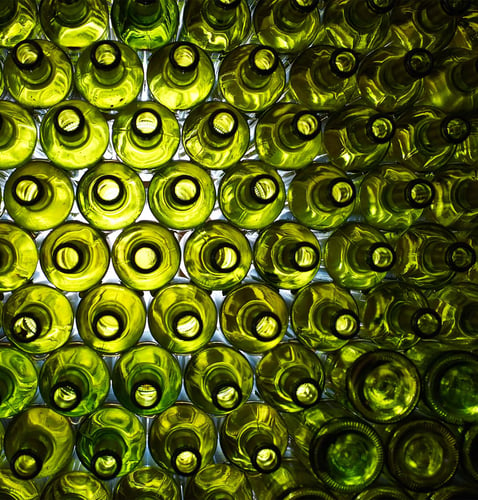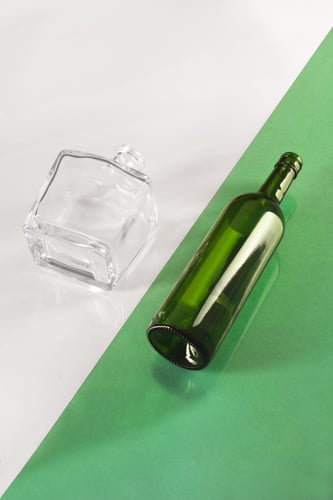
As the liquors industry evolves, glass bottles are also adapting to new market trends and demands.
In this article, we will explore some of the most revolutionary trends in glass bottle design for spirits and how these trends are redefining the consumer experience and transforming the industry with high-quality glass.
Benefits of Glass Bottles for Liquors
Glass is often selected as a packaging material owing to its recyclable, reusable and non-reactive qualities. It prolongs the shelf life of food and beverages and prevents contamination.
Glass jars, lids, containers, and bottles are available in a variety of shapes, sizes, and colors to meet your specific needs.
Glass is widely used not only in packaging food and beverages but also in pharmaceuticals, cosmetics, chemicals, and personal care products.
Durability
Glass packaging is more durable than plastic packaging. As long as the glass is not broken, its lifespan is infinite, providing greater durability and longevity.
When handling glass packaging, carefully examine the interior packaging for shipment to avoid damage or breakage. Protect the glass’s integrity with proper packaging.
Consider downsizing your inner packaging solution to maintain the glass’s integrity. Your customized glass packaging could one day become a vintage collector’s bottle.
Sustainability and recyclability
Glass bottles for liquors are fully recyclable, including green and brown glass. They are made from natural raw materials, adding an environmental benefit.
This protection can lead to a longer shelf life, resulting in less waste. Glass also avoids the chemical additives found in other packaging materials.
These additives may leach into the environment or the product, making high-quality glass a cleaner, safer choice. Its sustainability and purity contribute to overall product quality.
Heat-tolerant material
Additionally, glass packaging is highly heat-resistant, aiding in protection during production and shipping processes. This reduces breakage and waste, ensuring better product integrity.
Glass containers are also beneficial for food packaging, as they help keep food warm, making it a practical choice for both manufacturers and end-users in food packaging.
Versatility
Glass jars and bottles provide tremendous versatility in terms of color, form and use in the packaging sector. They provide a rapid visual brand experience by themselves, providing a perception of quality which is more difficult to accomplish with other packaging materials.
Classic appeal
Due to years of use and manufacturing in packaging, glass often exudes an aura of elegance and antiquity. This adds a sophisticated touch to products.
The material itself contributes significantly to the overall aesthetic of the packaging design. It is highly popular in the food and beverage industry.
Glass maintains the product’s flavor, unlike other packaging materials that may affect it. Its historical significance gives it an instant, traditional appeal.
Trends in Packaging Glass Bottles for Liquors
Minimalism and Elegance
Minimalism remains a dominant trend in glass bottle design. Clean, simple shapes combined with subtle details convey a sense of sophistication and modernity.
Elements such as labels and decorations on the glass bottles for liquor (frosted, screen printing, full-body decoration, sandblasting, among others) complement the product’s image.
Tactile Experience
Glass bottles are adopting innovative tactile designs to offer a unique sensory experience. Interesting textures like embossing and engravings are used to enhance consumer perception.
These tactile elements reinforce the brand’s identity in an elegant and lasting way, making the product stand out and enriching the overall experience.
Unusual Shapes and Silhouettes in Glass Bottles for Liquors
To stand out and capture consumer attention, brands are choosing bottles with unusual shapes and silhouettes. From angular and asymmetrical designs to nature-inspired forms, creativity is paramount.
These unique shapes provide originality and identity to the final product, enhancing its appeal and setting it apart in the market.
Personalization and Limited Editions
Customized glass bottles for liquor and limited editions are gaining popularity among spirits brands. These exclusive bottles become true collector’s items, featuring unique details such as engravings and signatures.
They may include personalized labels and even be made of crystal, adding value and creating an emotional connection with the brand, enhancing their appeal.
Artistic Designs and Creative Collaborations
Packaging design has become a platform for artistic expression, with collaborations involving artists, designers, and artisans to create truly unique glass bottles. These partnerships add creativity.
Collaborations are ideal for storytelling or making events memorable. They add emotional value to the product, creating a deeper connection and a more memorable experience for consumers.
The Importance of Color
Colors in glass bottles for liquors are strategic, affecting aesthetics and content protection. The selection influences consumer perception, preservation, and product quality.
Next, we explore the most common colors in glass bottles and their applications in various industries. Each color has unique characteristics that benefit specific products, from beverages, liquor and spirits.
Flint Bottles

Flint glass bottles are common and versatile. They allow visibility of the content, which is valuable for visually appealing products.
Are widely used for packaging water, soft drinks, juices, and premium liquors such as gin, vodka, and white rum.
Additionally, their clear and elegant appearance enhances the product’s presentation, allowing consumers to appreciate the quality and purity of the liquor bottle.
It is the most common glass color among spirits due to its classic and versatile appearance. This color enhances the visual appeal and highlights the premium quality of the liquors.
Amber Bottles

Amber glass bottles can range from light yellow to dark brown. It effectively filters ultraviolet light, helping to protect light-sensitive contents.
This characteristic makes amber glass bottles predominantly used in the beer and wine industry.
Additionally, its strength and durability make it an ideal option for long-term storage.
Maintaining the quality and flavor of the beverages intact, our packaging solutions ensure that each drink remains fresh and unspoiled.
Green Bottles

Green glass bottles for liquors can vary from light green to dark green. Like amber glass, they offer some protection against light, albeit to a lesser extent.
This color is used to package products such as olive oil, wine, and beer, as they require moderate light protection.
The choice of green glass is not only functional but also adds an aesthetic element, enhancing the presentation of products in the market.
Green bottles are an excellent option for protecting from light.
In summary, the choice of color for bottle packaging is a strategic decision between aesthetics and functionality.
Most Important Parts of a Glass Bottles for Liquors
Glass bottles for liquor consist of five essential parts: the mouth, neck, shoulders, body, and base. Each plays a crucial role in the functionality and aesthetics of the container.
Finish
The mouth is the top opening of glass bottles. Various types are designed to allow a hermetic seal.
The most commonly used are screw cap, cork, and guala cap, selected according to the style and type of product.
Neck
Connecting the mouth to the rest of the bottle, the neck is the narrow, elongated part located at the top of the bottle’s body. It has a smaller diameter than the body and serves as the area from which you pour the liquid.
In glass bottle packaging, the neck facilitates controlled pouring, allowing the liquid to flow smoothly.
The design of the neck can vary in both length and diameter. Consequently, this variation affects both the aesthetics and functionality of the bottle.
Shoulders
Situated between the neck and the body, the shoulders provide structural stability to the bottle. In glass bottles for spirits, the inclination of the shoulders can affect pouring.
Rounded and square shoulders are the most popular. This area connects the vast main body with the narrower neck, facilitating handling.
When you tilt a bottle, the shoulder’s inclination affects the pouring speed. This factor plays a crucial role in the experience of serving drinks.
Body of glass bottles for liquors
The body is the largest part of the glass bottle for spirits. It is where the contents are stored. In glass bottles for spirits, the body is usually cylindrical, square, or conical.
It is the area of the bottle that carries the most information, as it contains the liquid. It can have labels and distinctive decorations about the product.
These labels inform the consumer about the content. Additionally, distinctive decorations help to identify and differentiate the bottle in the market.
Base
The base is the bottom of the bottle and plays a crucial role in the stability of the container. It can also determine how premium a product is.
In glass bottles for spirits, a well-designed base ensures that the bottle stands upright and does not tip over easily.
The base can be flat or have an indentation, known as a punt, which distributes pressure. This is important in bottles for sparkling wines.

Conlcusion
The choice of qualities for glass bottles for liquors is a strategic decision. This decision should be based on the goals and values of each company. Additionally, it should consider the expectations and preferences of consumers.
Visit bpsglass.com and explore the variety of high-quality glass bottle packaging we offer.



